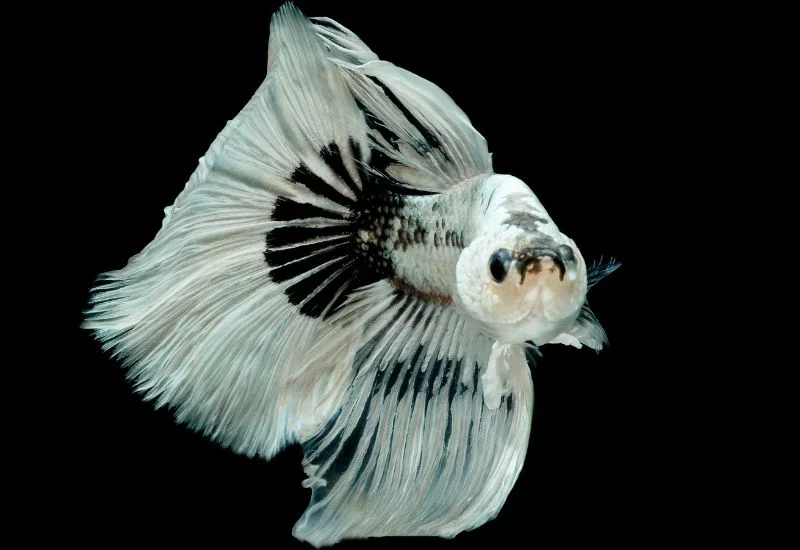People love to keep betta fish in their aquariums due to their vibrant and beautiful fins. Betta fish are aggressive, especially towards their own species, but many fish options can live with betta under the right circumstances.
However, unintentionally adding a fish that cannot live with betta can impact both fish. The male betta is aggressive in nature due to territorial reasons. Here are the details about which fish can live with betta.
Fish that Can Live With Betta
Here is a list of fish that can cohabitate with betta:
Shrimp
There are different types of shrimp that can live with betta fish:
Red Cherry Shrimp
Red cherry shrimp are an excellent option to have as a tank mate. The size of the shrimp is 1 inch. You can add many of them. The waste production ratio is too low. They also keep your tank clean by eating any algae in your aquarium. Before adding them, ensure plenty of space to hide them so the betta fish do not consider them a threat.
Amano Shrimp
Amano shrimps are known to live with betta. They get too friendly around the fish. Betta fish are aggressive in nature, so before putting them on, make sure you have a 30-liter tank so the shrimp can stay away from the betta and hide as well. The size of the shrimp is 2.5 inches. They are also famous for cleaning aquariums. They eat algae and uneaten food and keep your tank clean.
Ghost Shrimp

The transparent color of the shrimp makes them unique and the best tank mate to live with betta. The ghost shrimp is scientifically known as Thalassinidea. The transparent color of the shrimp keeps them unnoticeable in the tank. The size of the shrimp can be 1.5 inches, and they can be kept in groups of four or more. They can last up to 1.5 years. They also eat algae from the tank and keep your tank clean.
Snail
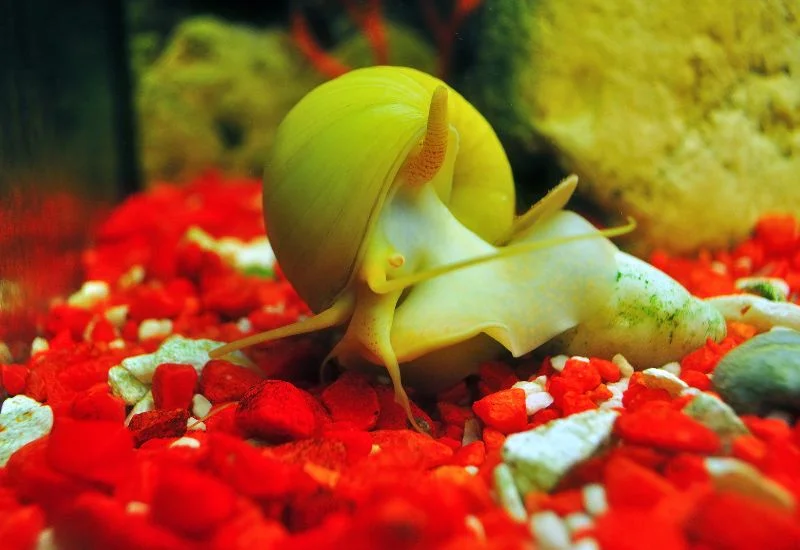
Here are some snails that can cohabitate with betta fish:
Apple Snail
The Apple snail is also known as the golden snail. The size could increase up to 15 cm if we kept them right. These snails are the biggest on the list. The snails typically stay in the bottom of the aquarium. They eat uneaten old food and algae from the substrate of the tank. The snails cannot be kept in the aquarium for less than 30 liters. The snails produce a lot of waste, and the amount of ammonia in the tank increases. These snails are best kept in large tanks with betta fish.
Mystery Snails
The snail is scientifically known as Pomacea Bridgesii and comes in beautiful blue, golden, and dark brown colors. They do not reproduce sexually as most of the snails do. So, there is no concern of invasion. This makes them the best tank mates for betta fish. They eat old food and algae from the tank, which keeps your tank clean. The snail can be 2 cm in size and has a lifespan of about one year.
Turret Snails
Turret snails are also known as Malaysian trumpet snails. The size of the snail is half an inch. Perfect to cohabitate with betta fish. They can live happily on an acceptable substrate. They also maintain the cleanliness of the tank by eating algae and old food. The population can increase tenfold within two months. You need to remove them from the tank if they overcrowd the aquarium.
Assassin Snails
Assassin snails are famous for eating overpopulated snails from the aquarium. If the snail population grows too much in the tank, you can add assassin snails to naturally reduce it. You can add them to keep the population of the snails in control.
African Dwarf Frogs
The African dwarf frogs are scientifically known as Hymenochirus Boettgeri. The size of the frog is 2.5 inches. They settled in the bottom of the tank and hid so they would not come in contact with betta fish. When they see the clear line, they jump towards the surface for oxygen and hide back at the bottom of the tank. They are calm and can perfectly live with betta fish. The life span of the African dwarf can be 1.5 years.
Harlequin Rasbora
The harlequin rasbora is scientifically known as Trigonostigma heteromorpha. The fish is calm and can be a perfect tank mate with betta fish. Betta fish like to swim slowly, while the harlequin rasbora’s swimming capacity is fast, so there is no fear of being attacked by betta. The bot fish share food similarities. The size of the fish is 1.5 inches. The fish like to stay in groups of 4 or more, depending on the aquarium size. Less than four rasboras in the tank can make them stressed and impact their health.
Cory Catfish
The color of the fish is bronze and scientifically known as Corydoras. The size of the fish can be 2 to 5 inches. The fish share the same water conditions as betta does. The fish not only eat food but also uneaten food from the substrate of the tank. The fish are bottom dwellers, whereas the betta fish like to sit on top of the aquarium. This combination makes them the perfect tank mates to stay together. Cory fish prefer to live in groups of four or more, depending on your tank size, and they can live for 3 to 4 years.
Kuhli Loach
Betta fish and kuhli loaches are known to be excellent mates. The scientific name of the fish is Pangio Kuhlii. The fish looks like an eel. The fish stays in the bottom of the tank and enjoys hiding places. The diet of both is the same. They can live happily in a group of 3 or 4. They are friendly and calm in nature.
Ember Tetra
The scientific name of the fish is Hyphessobrycon Amandae. They are calm in personality. The ember tetra is a schooling fish and stays in a group of 6 or more depending on the aquarium’s size. The fish is famous for its beautiful orange color and can live up to 2 to 4 years. They like to swim in the middle of the tank, mainly around the plants and decorations, while the betta is a surface swimmer. They can cohabit perfectly.
Neon Tetra
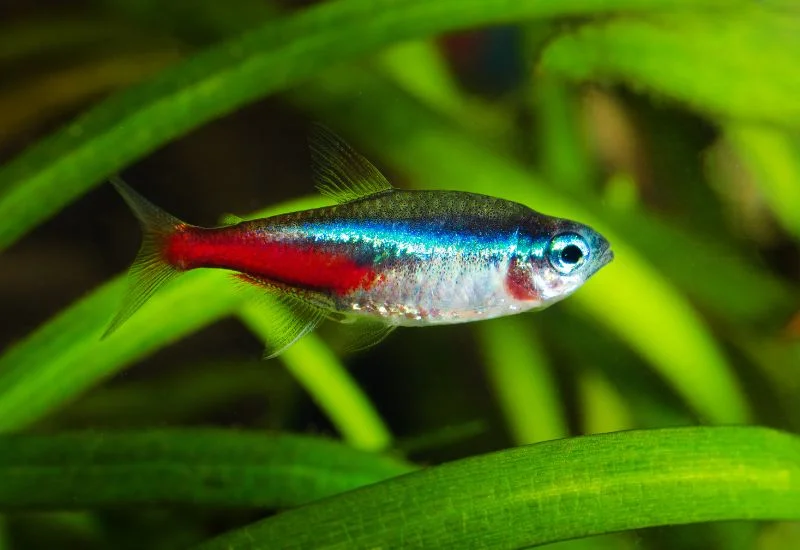
The neon tetra is scientifically also known as Paracheirodon Innesi. The color of the fish is silver blue. They can live best with betta due to their speed. Neon tetras are fast swimmers. The fish are schooling, so they must live in packs of 6. A pack of 8 to 10 will be more suitable. Less than six fish can put them under stress that can further impact their health.
Dwarf Suckers
The fish is famous for its sucker mouth. The dwarf sucker shares the similar environmental conditions to betta doses. The pH level and water temperature are the same as betta. This fish is fond of algae. If there is any growth of algae, it is best for the fish to clean it out. The fish mostly stay at the bottom of the tank and hide behind the leaves; that is what makes them the best tank mates for betta fish.
Panaqolus Maccus
The size of the Panaqolus maccus can increase up to 8.8 cm. The fish are known to live with betta fish. Before adding them, make sure there are a lot of hiding spaces and add driftwood for Pleco. Pelcos biowaste is huge. Make sure you have good filters that can work according to the fish. This fish is happy to eat any algae in the tank. Make sure the fish diet is complete. If there is not enough algae in the tank, provide them with algae wafers and blanched veggies.
Cardinal Tetra
The length of the fish can be 3.8cm, and they share similar water conditions to betta doses. The fish is scientifically known as Paracheirodon axelrodi. The fish can adjust to betta fish due to their swimming speed. The fish like to stay in a group. A group of 6 or more will make them happy. A group of less than four will make them stressed.
Bristlenose Pleco
Bristlenose pleco can easily live with betta fish because they bottom dwellers. Betta likes to stay on the top of the tank due to territorial issues so there is no way bristlenose pleco comes in a way of Betta. Before adding the fish, make sure the tank is large enough. A bristlenose pleco needs 25 gallons whereas betta needs only 5 gallons.
Platy
The size of the fish can increase up to 1.5 to 2.5 inches. Platy fish are calm in nature and can coexist perfectly with betta fish. The fish like to swim around the tank and make sure there is plenty of space so the fish would not come in the way of betta fish. The fish like to sit in a group of 3 or more. They share similar environmental conditions. Plenty of fish are fast swimmers and can become aggressive while food-consuming. Make sure your betta is getting sufficient food.
White Cloud Mountain Minnow
The size of the fish can increase up to 1.5 inches. The fish is famous for its beautiful color. The white clouds can easily adjust in betta fish environments. This is a schooling fish, so the group of 6 would be perfect. In the wild, the fish eat worms and invertebrates, but in the tank, we can give them fish flakes, brine shrimp, and even frozen food. Anything that can fit into their small mouth. The fish is calm in nature and can be a perfect pair with betta.
Guppies
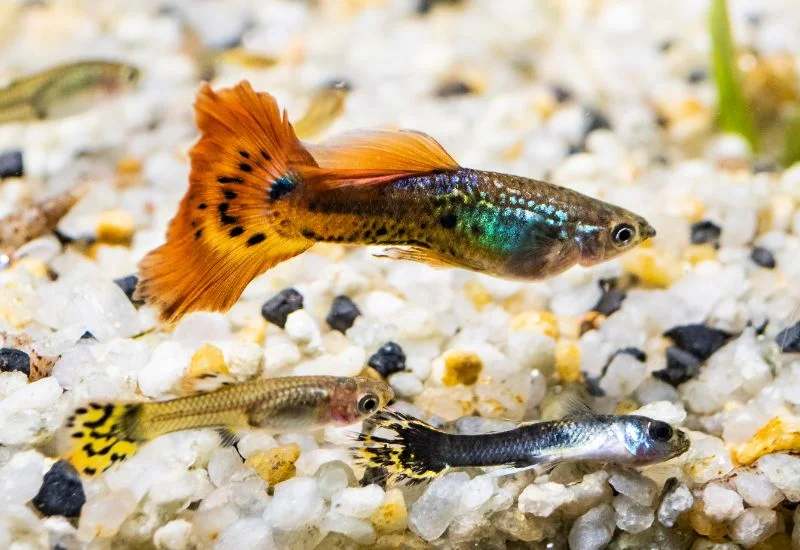
Guppies can stay with a betta. They both share the same water temperature. However, betta fish only eat a meat-based diet, while guppies are omnivores. They can eat vegetables too. The betta fish is also known as a fighter fish. It will be a good decision to add only one male with guppies or add them with female betta fish. The pH level required by guppies is 6.8 to 7.5, which is the same as betta fish.
Pygmy Corydoras
The scientific name of the fish is Corydoras pygmaeus. The size of the fish is 1.2 inches. This fish is the smallest member of the cory catfish clan. It is calm in nature. While other cory fish like to stay on the bottom of the tank, this fish is a mild swimmer. The fish can live happily in a group of 8 or more, depending on the size of your aquarium.
Cherry Barb
The scientific name of the fish is Puntius titteya. The fish is a famous member of the barb family in aquatic life. The fish is friendly in nature and does not bother the other fish. The fish is renowned for its beautiful deeper red color. They can eat minor bugs, microworms, crustaceans, zooplankton, and even algae. You can also feed them different dried, frozen, and live food.
Tank Mates to Avoid
Betta usually attacks on the gills and fins of the other fish. Do not add any fancy fish or fish that is bigger in size than your betta fish. Here is a list of fish that you should avoid adding to betta fish
- Goldfish
- Puffers
- red tail sharks
- Other male bettas
- cichlids
- Angelfish
- Tiger barbs
Reason For the Aggressive Behavior of Betta Fish
The aggressive behavior of the betta fish is for food, shelter, and access to females. The male betta are fish-aggressive in nature as they mark their territory and do not bear the presence of any other fish. The betta fish are more aggressive towards their own kind. So, we cannot keep two male bettas in one tank. The female betta fish can be in a sorority in groups of five. Normally, female betta fish are kept with other species of fish.
Tank Size For Betta
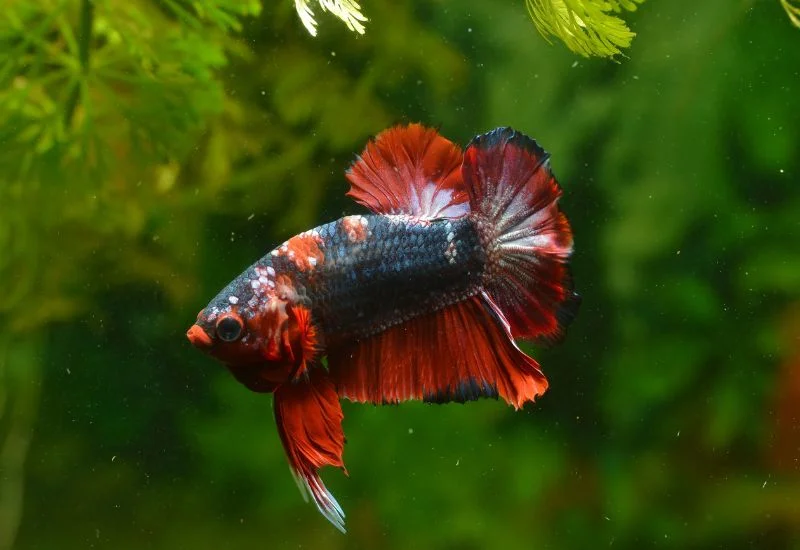
In the wild betta fish have miles of area to swim freely. When one betta male fish comes in contact with another, they fight. But keeping them in an aquarium 5 gallons would be enough. Betta fish are not active swimmers. Five five-gallon space is enough for them to swim freely.
Advantages of a Giant Aquarium
Here are some edge points of having a big tank:
- The big tank means the low chance of your betta falling sick
- More options to add live plants and substrate into the tank
- A giant aquarium means less water change
- The rule of thumb says the big tank means fewer water changes
- You can add plenty of hiding spacing to add other fish with betta
Betta in a Small Tank
Betta fish are known as aggressive fish, so they are mistakenly thought to be able to live in small spaces. The small space will not only be an unpleasant experience for you but it will also make your fish stressed and sick. Every fish needs a space according to their required need. If you want a happy betta fish try to increase your tank size provided needed water parameters.
Care for Betta Fish
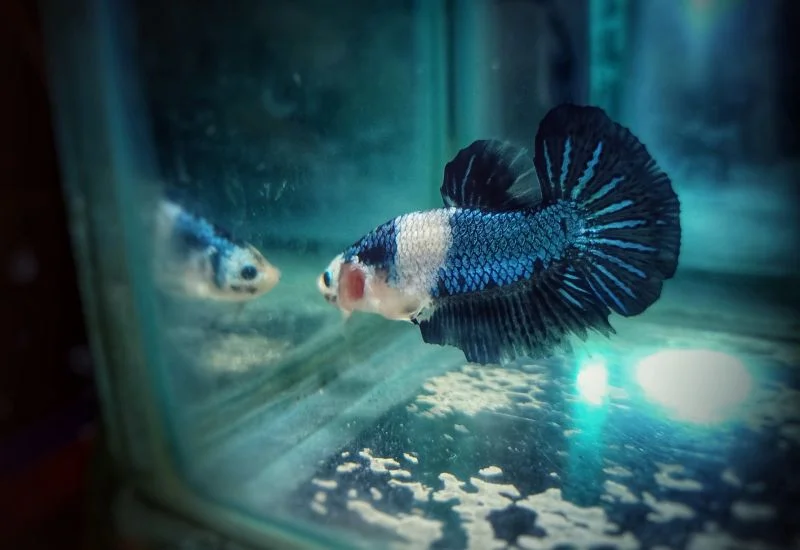
While caring for betta, here are some things you should keep in mind:
Betta Fish Tank
Betta should be kept in at least a 2-gallon tank. The fish comes to the surface for breath and is famous for its jumping tendency. Make sure to have a cover on the surface of the aquarium.
Filter of the Tank
A filter can be good for fish despite the tank size. The filtration in the tank maintains the water quality. Eliminate any harmful toxins from the water, such as ammonia, nitrate, and nitrite. The filter system should be strong enough to cycle the water 3 to 4 times per hour. Betta fish are not an active swimmer, too much current in the water can damage their fins. Select the filter in which fish can control the flow rate to keep the current low.
Water Quality For Betta Fish
Check the water quality of the tank regularly to ensure the chemicals rate is in control. The amount of ammonia, nitrate, and nitrite should be low. You can use water test kits to check instantly and accurately.
Water Temperature
The betta fish live in the water temperature from 72° F to 82° F. You should install a water heater in your tank to maintain the temperature. The heater will monitor the temperature for any unnecessary fluctuation.
Conclusion
Due to the behavior of betta fish, they are considered to be kept alone. The fish is complex in nature but can get bored and alone while kept in solitude. We cannot add any random fish without knowing its nature with betta fish. The fighter fish are more retaliative towards their own species but can do a lot of good with other types. The fish with bright colors are hard to keep with betta as the fish will see them as a revival.
You need to keep the fish with betta, which is not more prominent in size than betta and should be a middle or bottom dweller. Betta likes to thrive on the surface. Before adding new fish check the compatibility of both fish and see if they can live under the same water conditions. A fish with a friendly and calm nature would be a perfect match to cohabitate with betta.
